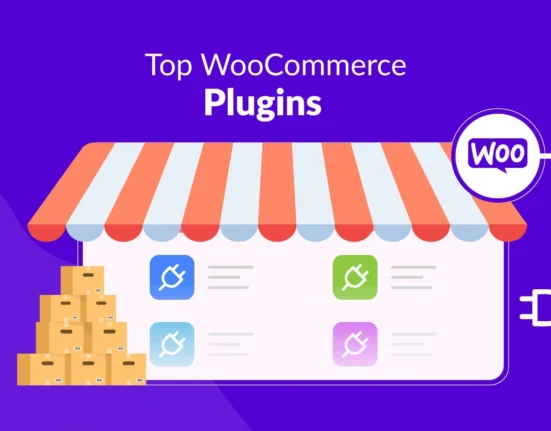Like profit-centered businesses, nonprofit organizations must also have websites. However, the website structure and messages are different due to several reasons. The following are some of the features a nonprofit website must have for better operations and transparency.
Some of the features a nonprofit website
Links to social media pages
It is an open secret that social media is one of the most trusted sources of information in our generation — even more trusted than traditional media. In order to create trust, especially among donors, the website must have social media links. If the nonprofit organization does not have social media pages, it is vital to create accounts on all social media platforms.
The reason why these links are essential on a website is that they create a website extension outside the traditional space. In most cases, donors and interested parties may interact with social media accounts more than on the website. This reality does not mean that websites are not relevant at this age. The two platforms — social media presence and the site — supplement one another.
On the website, the social media live feeds should also be visible, mainly the interactions or special announcements. Making the feeds visible on a website is also a perfect way of showing the interactive side of the organization. Interactive organizations paint a picture of an approachable organization, which is unmatched in this niche.
Finally, the nonprofit organization should have links to all social media platforms. Creating accounts in all social media platforms is a game-changer in reaching as many people as possible.
Staff pages
Since most nonprofit organizations deal with solving problems affecting people, it is essential to create staff pages. Most nonprofit organizations have many staff members, but for this case, only people in unique positions or the management should have individual profiles. Alternatively, the website can have one staff page with all the names and pictures of professionals working with the organization.
Why are staff pages relevant?
First, they are ideal in humanizing an organization, especially in this age of bots and machine-controlled systems. The faces and short introductions on each staff in the management team are a perfect illustration that the organization is people-centered, and more importantly, the organization understands empathy.
Second, these pages are critical in creating a sense of accountability, especially when dealing with donated funds. The individual pages are essential for donors that may want to do background searches on the management team. In 2018, the Oxford University published a report that showed the importance of associating a nonprofit organization with human faces.
Finally, individual pages are vital in general rankings, especially if the staff members have social media pages or online profiles. This feature is also present in the profit-centered companies. A company such as Apple gets a lot of traffic from social media pages of its staff members. For more traffic, therefore, a nonprofit organization needs to consider staff pages.
Responsive donation page
One of the main reasons why most nonprofit websites exist is to raise funds for unique projects. In order to raise funds, therefore, the site must have a donation page that is not only accessible but also modernized. It is essential to inform potential donors on what an organization wants to achieve if you have a responsive donation page.
What are some of the features of a donation page?
First, the donation page must be visible. Visibility is critical in this niche, especially in a world where people have little time to browse through different websites. The colors and the structure of the donation page must be attractive for more donations.
Second, the website should also give donors more banking options to support the organization. The banking space is one of the fastest-growing industries in the world. Therefore, the nonprofit organization should give donors more options as far as banking options are concerned. The options must, however, be legal, and more importantly, the organization should also provide important information such as donation limits.
Thirdly, it is important to inform donors on different projects. If donors have an understanding of the nonprofit organization, it is easier to raise funds. Having a specific goal is also critical for the management of funds and creating a good rapport with donors.
Responsive design
Just like in other websites, it is important to note that responsive design is irreplaceable in the world of nonprofit organizations. Even though website traffic is critical in this niche, the conversion rate is also important. The following are some of the reasons why investing in a responsive design is critical.
First, the responsive design keeps visitors on your website as opposed to nonresponsive websites. During that time, it is possible to sell your concept to the visitors and, therefore, easier to convince more people. If the main goal is to raise funds, it is easier with a responsive website as opposed to any website.
Second, a responsive website is also a perfect way to increase the interaction between the organization and the potential customers. In any nonprofit entity, information is vital, and it should be the dream of every organization to make information accessible to the target audience through responsive website design.
Thirdly, responsive design is critical for SEO and ranking purposes, and as a nonprofit organization, you should consider investing in a good design. Over the years, Google has pointed responsive design as one of the most important elements of better ranking websites.
Financial transparency
Financial transparency is the final and one of the most important elements of an excellent nonprofit organization’s website. Funds and collection of funds are emotive issues in the world of nonprofit organizations. Therefore, an ideal website must simplify the information on all money donated and any future projections.
It is also important to provide the necessary visual representation of how the organization is spending funds. For example, graphs and pie charts are some of the best ways of presenting important information on funds and their usage.
In conclusion, it is critical to invest in innovative web design as a nonprofit organization. Although people have relatively low expectations when it comes to nonprofit organizations and their websites, the opposite is true. Therefore, an ideal website design should be attractive, convincing, transparent, and, more importantly, user-friendly.





